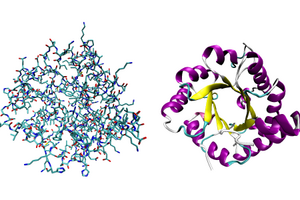This can help in the creation of new drugs and materials.

Scientists from the University of Washington have developed an artificial intelligence system, able to create new proteins. As reported by MIT Technology Review, this development may help in the creation of new drugs and materials.
The new algorithm was named ProteinMPNN. Scientists usually create new proteins by modifying those found in nature. But the creation of ProteinMPNN opens the door for researchers to create connections from scratch.
Also read: Google fires engineer for claiming artificial intelligence has feelings
“In nature, proteins solve almost all problems of life, starting from harvesting the energy of sunlight and ending with the creation of molecules. Everything in biology comes from proteins. They evolved during evolution to solve problems that organisms faced during evolution. But today we are facing new challenges like COVID-19. If we could design proteins that were as good at solving new problems as those that evolved are at solving old problems, that would be very, very powerful,” said David Baker, one of the authors of the paper. and director of the Protein Design Institute at the University of Washington.
Proteins consist of tens of thousands of amino acids, which are linked in long chains, forming three-dimensional structures. AlphaFold, which was introduced in 2020, helps researchers predict a structure by giving an idea of how it will behave.
However, ProteinMPNN can help solve the reverse problem: if scientists already know the future structure of a protein, the algorithm will help them determine the correct sequence of amino acids. The development is based on a neural network trained on a large number of amino acids, which are assembled into three-dimensional structures.
But scientists need to solve another problem: to create proteins that are useful in real life, it is necessary to find out what the protein backbone is will perform the required function. And the researchers were able to cope with this task by combining two methods of machine learning.
Related video
Previously, scientists from the Sun Yat-sen University Ophthalmology Center used artificial intelligence to develop models for predicting the occurrence and progression of glaucoma strong>.




